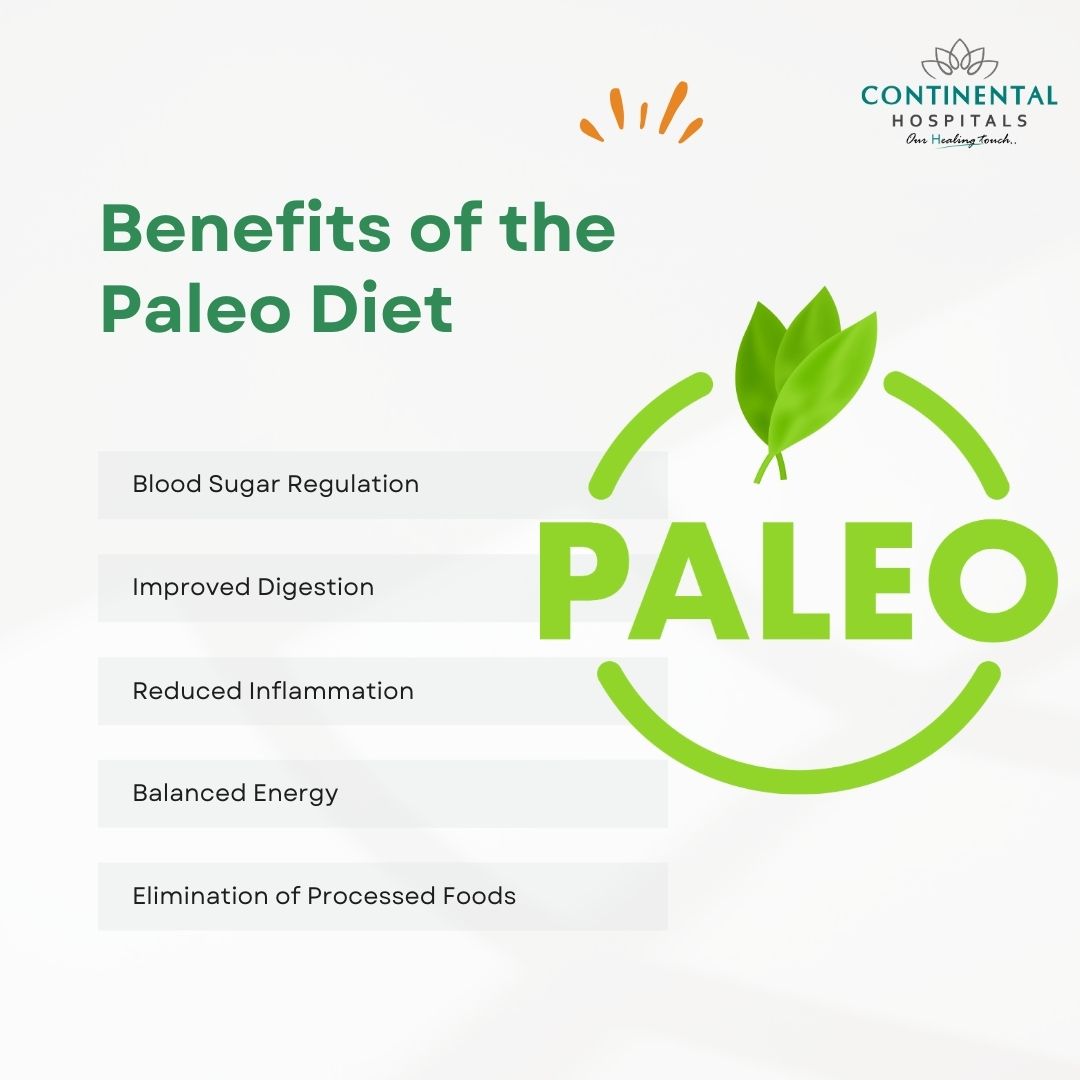In the quest for a healthier lifestyle and sustainable weight loss, many individuals are turning to the Paleo diet—a nutrition plan inspired by our ancestors' dietary habits. This blog aims to provide you with a thorough understanding of the Paleo diet and its potential benefits for weight loss. The Paleo diet, also known as the caveman or Stone Age diet, is centered around consuming foods that our Paleolithic ancestors would have eaten. This includes lean meats, fish, fruits, vegetables, nuts, and seeds while excluding processed foods, grains, dairy, and legumes. By mimicking the dietary patterns of our ancient predecessors, proponents argue that the Paleo diet can positively impact weight loss and overall health.
Benefits of the Paleo Diet
Nutrient-Dense Foods: The Paleo diet encourages the consumption of whole, unprocessed foods such as lean meats, fish, fruits, vegetables, nuts, and seeds. These foods are generally rich in essential nutrients, including vitamins and minerals.
Weight Loss: Some individuals report weight loss when following the Paleo diet, likely due to a reduced intake of processed foods, refined sugars, and grains. The emphasis on protein and fiber-rich foods may also contribute to feelings of satiety, potentially reducing overall calorie intake.
Blood Sugar Regulation: By eliminating or reducing refined sugars and processed carbohydrates, the Paleo diet may help stabilize blood sugar levels, which could be beneficial for individuals with insulin resistance or type 2 diabetes.
Improved Digestive Health: The diet's focus on whole foods and the exclusion of certain grains and dairy products may lead to improved digestive health for some individuals, reducing symptoms such as bloating and indigestion.
Increased Energy Levels: Advocates of the Paleo diet claim that eliminating processed foods and focusing on nutrient-dense options can lead to increased energy levels and improved overall well-being.
Reduced Inflammation: Some proponents argue that the diet's emphasis on anti-inflammatory foods, such as fruits, vegetables, and omega-3-rich fish, may help reduce inflammation in the body.
Improved Lipid Profile: The diet's emphasis on healthy fats from sources like nuts, seeds, and olive oil may contribute to a favorable lipid profile, potentially lowering the risk of cardiovascular disease.
Better Blood Pressure Control: With a focus on whole foods and a reduction in processed and salty foods, the Paleo diet may contribute to better blood pressure control for some individuals.

Before making any significant changes to your diet or lifestyle, it's crucial to consult with a dietitian.
Foods to eat on the paleo diet
Fish and Seafood: Fatty fish like salmon, mackerel, and sardines are rich in omega-3 fatty acids. Shellfish, such as shrimp, crab, and lobster, are also paleo-friendly.
Eggs: Eggs are a good source of protein and healthy fats and are a staple in the paleo diet.
Vegetables: Non-starchy vegetables like leafy greens, broccoli, cauliflower, peppers, and carrots are encouraged.
Fruits: While some versions of the paleo diet limit fruit intake due to their natural sugar content, most allow moderate consumption of fruits such as berries, apples, and citrus fruits.
Nuts and Seeds: Almonds, walnuts, macadamia nuts, flaxseeds, chia seeds, and pumpkin seeds are commonly included in the paleo diet.
Healthy Fats: Healthy fats from sources like avocados, olive oil, coconut oil, and ghee are included in the paleo diet.
Herbs and Spices: Fresh herbs and spices add flavor to paleo dishes without added sugars or artificial ingredients.
Sweeteners: While refined sugars are excluded, some natural sweeteners like honey and maple syrup are considered acceptable in moderation.
Beverages: Water is the primary beverage on the paleo diet. Herbal teas and black coffee (in moderation) are also generally accepted.
Foods to avoid on the paleo diet typically include:
Grains: Wheat, barley, oats, and rice are excluded.
Legumes: Beans, lentils, peanuts, and soy products are generally avoided.
Dairy: Most versions of the paleo diet exclude dairy, although some individuals include certain dairy products like butter and ghee.
Processed Foods: Anything processed or containing additives, preservatives, and artificial ingredients is typically avoided.
Refined Sugars: Candy, sodas, and other sources of refined sugars are not part of the paleo diet.
Vegetable Oils: Highly processed vegetable oils like soybean oil, corn oil, and canola oil are often excluded.
Practical Tips for Going Paleo
Plan Your Meals: Planning is crucial when adopting any new dietary approach. Create a weekly meal plan that includes a variety of Paleo-friendly foods to ensure you get a balanced intake of nutrients.
Focus on Whole Foods: Emphasize whole, unprocessed foods. Opt for grass-fed meat, free-range poultry, wild-caught fish, and organic fruits and vegetables whenever possible.
Include a Variety of Vegetables: Vegetables are a cornerstone of the Paleo diet. They provide essential nutrients and fiber. Aim to include a variety of colorful vegetables to ensure a broad spectrum of nutrients.
Choose Healthy Fats: Include sources of healthy fats such as avocados, nuts, seeds, and olive oil. These fats are essential for energy and overall health.
Mind Your Protein Intake: Protein is a key component of the Paleo diet. Include a variety of protein sources, such as lean meats, fish, eggs, and plant-based options like nuts and seeds.
Experiment with Paleo-Friendly Flours: If you miss baked goods, try using almond flour, coconut flour, or cassava flour as alternatives to traditional flours.
Stay Hydrated: Water is essential for overall health. Drink plenty of water throughout the day to stay hydrated.
Read Labels: Be vigilant about reading food labels, especially for processed and packaged foods. Many contain additives, preservatives, and hidden sugars that may not align with the Paleo diet.
Prepare Snacks: Keep Paleo-friendly snacks on hand to avoid reaching for non-compliant foods when hunger strikes. Nuts, seeds, sliced vegetables, and fruit are good options.
Listen to Your Body: Pay attention to how your body responds to the changes in your diet. Adjust your food choices based on your individual needs and energy levels.
The Paleo diet is more than just a way of eating; it's a lifestyle rooted in the belief that our bodies thrive when fueled with real, whole foods. While individual preferences may vary, the principles of the Paleo diet provide a solid foundation for those seeking a balanced, nutrient-rich approach to nutrition. Consider embarking on a Paleo journey and witness the transformative power of reconnecting with our ancestral roots for optimal health.
Before making any significant changes to your diet or lifestyle, it's crucial to consult with a dietitian.
Related Blog Articles:
1. Role of Vitamins and Minerals in Strengthening Your Immune System
2. Protein for Weight Loss: Food or Shakes for Effective Results
3. Balancing Macros: Protein, Carbs, and Fats in Your Diet
.webp)














